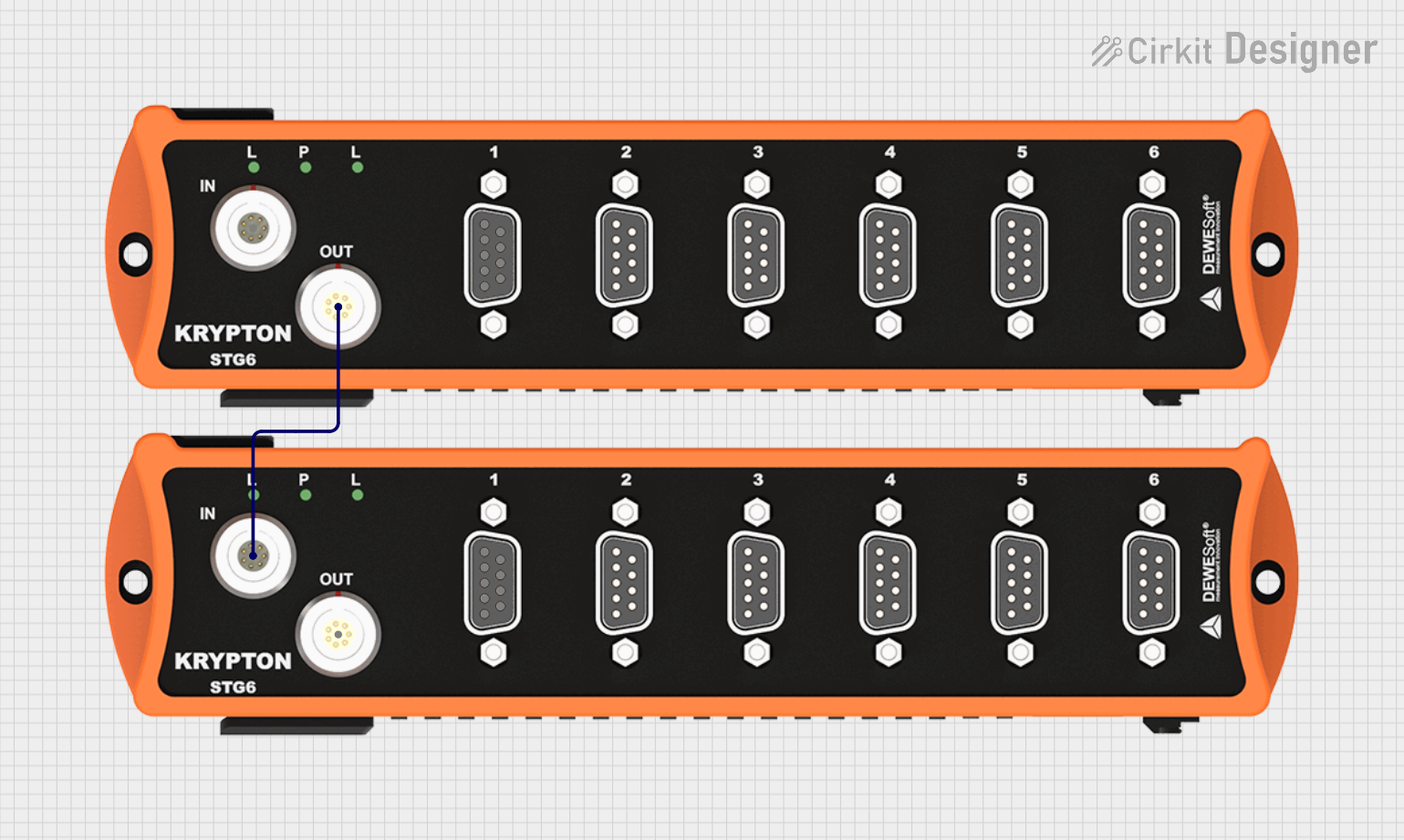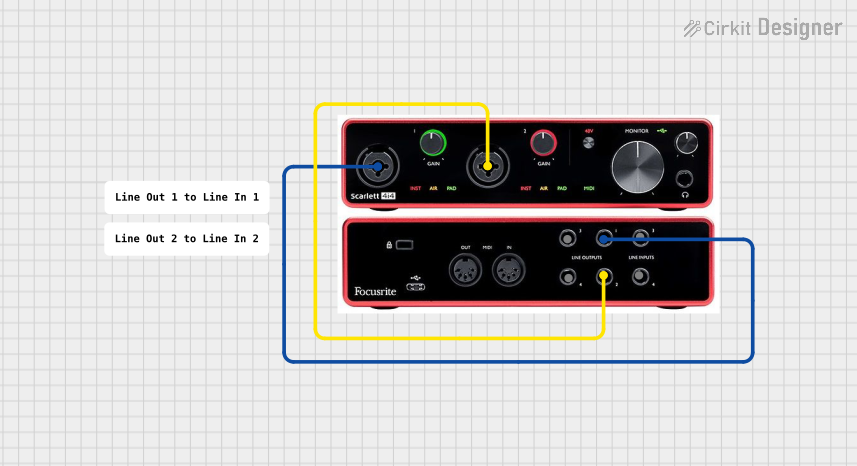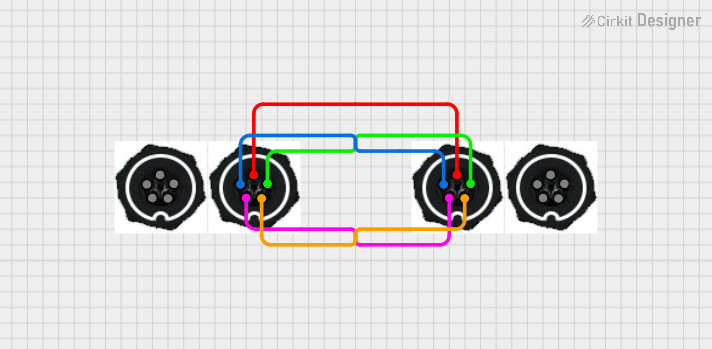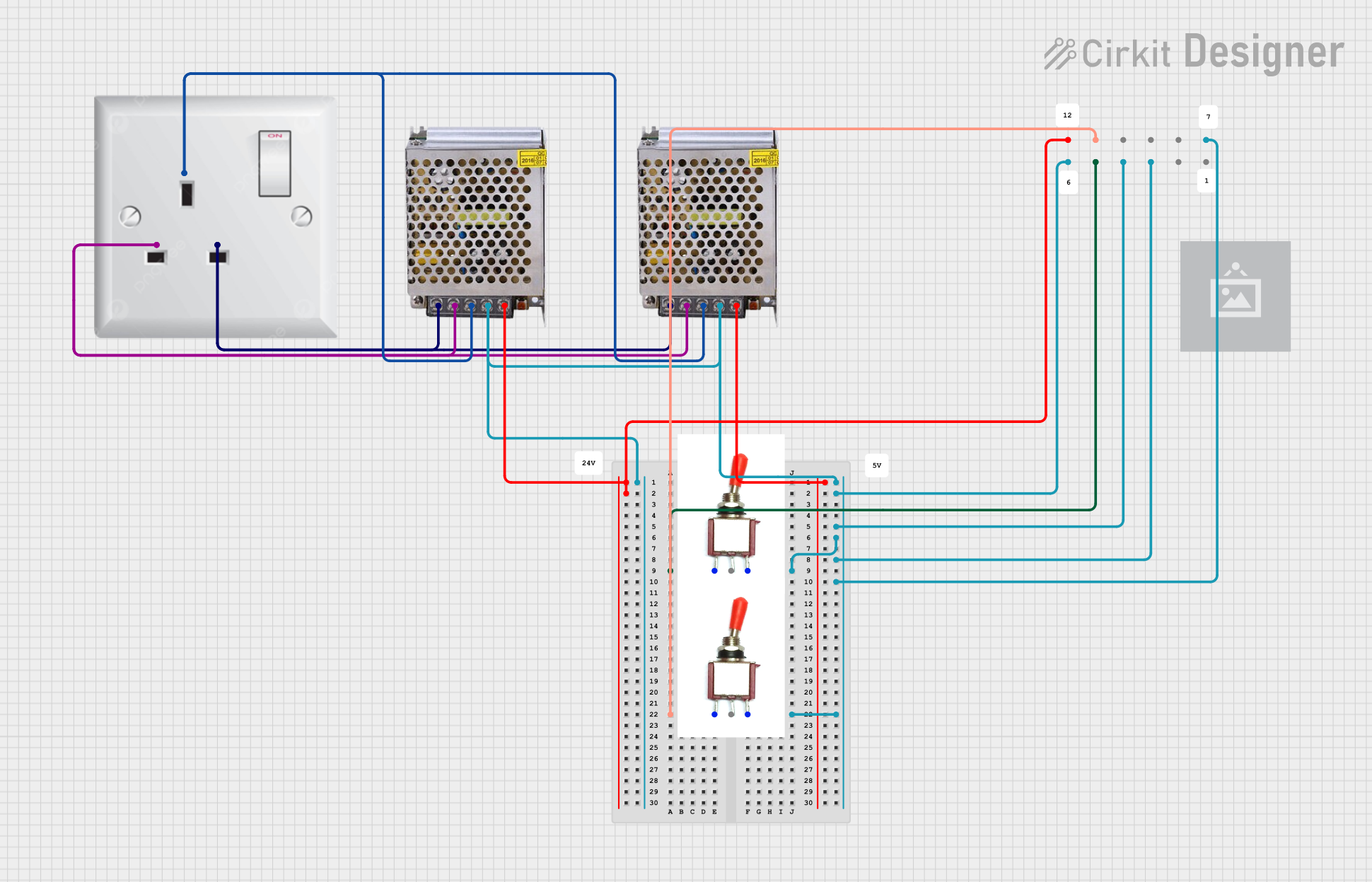
How to Use Connector 2 In 6 Out: Examples, Pinouts, and Specs

 Design with Connector 2 In 6 Out in Cirkit Designer
Design with Connector 2 In 6 Out in Cirkit DesignerIntroduction
The Connector 2 In 6 Out is a versatile signal distribution component designed to route two input signals to six output channels. This component is widely used in audio systems, data communication networks, and other applications requiring efficient signal splitting and distribution. Its compact design and reliable performance make it an essential tool for managing multiple output connections from a single or dual input source.
Explore Projects Built with Connector 2 In 6 Out

 Open Project in Cirkit Designer
Open Project in Cirkit Designer
 Open Project in Cirkit Designer
Open Project in Cirkit Designer
 Open Project in Cirkit Designer
Open Project in Cirkit Designer
 Open Project in Cirkit Designer
Open Project in Cirkit DesignerExplore Projects Built with Connector 2 In 6 Out

 Open Project in Cirkit Designer
Open Project in Cirkit Designer
 Open Project in Cirkit Designer
Open Project in Cirkit Designer
 Open Project in Cirkit Designer
Open Project in Cirkit Designer
 Open Project in Cirkit Designer
Open Project in Cirkit DesignerCommon Applications and Use Cases
- Audio Systems: Distributing stereo audio signals to multiple speakers or amplifiers.
- Data Communication: Splitting data signals for parallel processing or distribution.
- Signal Testing: Routing signals to multiple test points for analysis.
- Home Automation: Distributing control signals to multiple devices or zones.
Technical Specifications
The Connector 2 In 6 Out is designed to handle a variety of signal types, including analog and digital signals. Below are its key technical details:
General Specifications
| Parameter | Value |
|---|---|
| Input Channels | 2 |
| Output Channels | 6 |
| Signal Type | Analog or Digital |
| Maximum Voltage Rating | 30V DC |
| Maximum Current Rating | 1A per channel |
| Operating Temperature | -20°C to 70°C |
| Connector Type | Screw Terminal or Pin Header |
| Dimensions | 50mm x 30mm x 15mm |
Pin Configuration and Descriptions
The Connector 2 In 6 Out typically features screw terminals or pin headers for easy wiring. Below is the pin configuration:
| Pin Number | Label | Description |
|---|---|---|
| 1 | IN1 | Input signal 1 |
| 2 | IN2 | Input signal 2 |
| 3 | OUT1 | Output channel 1 (connected to IN1) |
| 4 | OUT2 | Output channel 2 (connected to IN1) |
| 5 | OUT3 | Output channel 3 (connected to IN1) |
| 6 | OUT4 | Output channel 4 (connected to IN2) |
| 7 | OUT5 | Output channel 5 (connected to IN2) |
| 8 | OUT6 | Output channel 6 (connected to IN2) |
Usage Instructions
How to Use the Component in a Circuit
- Connect the Inputs:
- Attach the input signals to the
IN1andIN2terminals. Ensure the input voltage and current do not exceed the specified ratings.
- Attach the input signals to the
- Connect the Outputs:
- Connect the devices or circuits requiring the signals to the
OUT1throughOUT6terminals. OutputsOUT1,OUT2, andOUT3will carry the signal fromIN1, whileOUT4,OUT5, andOUT6will carry the signal fromIN2.
- Connect the devices or circuits requiring the signals to the
- Power Considerations:
- If the signals require amplification or additional power, ensure the connected devices are capable of handling the load.
Important Considerations and Best Practices
- Signal Integrity: Use shielded cables for high-frequency or sensitive signals to minimize interference.
- Load Balancing: Ensure the total load on each output channel does not exceed the maximum current rating of 1A.
- Secure Connections: Tighten screw terminals or ensure pin headers are firmly connected to avoid signal loss or disconnection.
- Avoid Overvoltage: Do not exceed the 30V DC maximum voltage rating to prevent damage to the component.
Example: Using with an Arduino UNO
The Connector 2 In 6 Out can be used to distribute signals from an Arduino UNO to multiple devices. Below is an example of distributing a PWM signal:
Circuit Setup
- Connect the Arduino's PWM pin (e.g., Pin 9) to
IN1on the connector. - Connect
OUT1,OUT2, andOUT3to the input pins of three LEDs (with appropriate resistors). - Leave
IN2and its corresponding outputs unused, or connect another signal toIN2.
Arduino Code
// Example code to generate a PWM signal on Pin 9
// This signal will be distributed to OUT1, OUT2, and OUT3
void setup() {
pinMode(9, OUTPUT); // Set Pin 9 as an output
}
void loop() {
analogWrite(9, 128); // Generate a 50% duty cycle PWM signal
delay(1000); // Wait for 1 second
analogWrite(9, 255); // Generate a 100% duty cycle PWM signal
delay(1000); // Wait for 1 second
}
Troubleshooting and FAQs
Common Issues and Solutions
No Signal at Outputs:
- Cause: Loose connections or incorrect wiring.
- Solution: Verify all connections are secure and match the pin configuration.
Signal Distortion:
- Cause: Interference or exceeding the voltage/current ratings.
- Solution: Use shielded cables and ensure the input signals are within the specified range.
Overheating:
- Cause: Excessive current draw on one or more output channels.
- Solution: Reduce the load on the outputs and ensure the total current does not exceed 1A per channel.
Uneven Signal Distribution:
- Cause: Impedance mismatch between outputs.
- Solution: Use devices with similar input impedance or add resistors to balance the load.
FAQs
Q: Can this connector handle AC signals?
A: Yes, the connector can handle low-frequency AC signals, provided the voltage and current ratings are not exceeded.
Q: Can I use only one input channel?
A: Yes, you can use either IN1 or IN2 independently. The unused input will not affect the operation.
Q: Is this component suitable for high-frequency signals?
A: The connector can handle high-frequency signals, but using shielded cables is recommended to maintain signal integrity.
Q: Can I connect multiple inputs to a single output?
A: No, this component is designed for one-way signal distribution. Connecting multiple inputs to a single output may cause signal interference or damage.